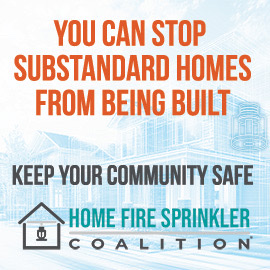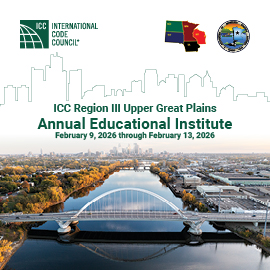
The financial value of building more resiliency into residential building codes
Modern building codes that include provisions for protection against earthquakes, flooding, wildfires and other natural disasters have no appreciable implications for housing affordability
The International Code Council has long held that stricter resiliency requirements for residential buildings do not automatically mean homes will become less affordable. Over the past several years, a growing body of independent research has been reaching the same conclusion. Not only that, but researchers are also finding that resiliency is a desirable feature that buyers are willing — and even eager — to pay a little extra for.
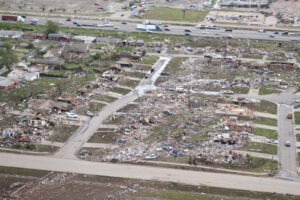
One of the most influential test cases for developing this line of resiliency research is the city of Moore, Oklahoma. In 2014, Moore’s city council voted to adopt a series of amendments to its residential building code to mitigate damage caused by tornadoes capable of generating strong winds up to 135 mph, equivalent to a rating of EF-2 on the Enhanced Fujita scale. The city decided to amend its code after being hit by three violent tornadoes in 14 years — the last of which was the third-most-costly tornado in U.S. history, which caused $2 billion in damage and killed 24 people, including seven students in an elementary school. In adopting the amendments, Moore became the first municipality in Oklahoma to adopt such strict wind standards into its residential building code.
Opponents of the amendments argued that the added expense of installing hurricane straps on the roof framing, strengthening gable end walls, using wind-resistant garage doors, and other changes would add $1 per square foot to the cost of construction.
Resiliency research supports modern codes
However, a 2018 study by economists Kevin M. Simmons, Ph.D., of Austin College and the National Institute for Risk and Resilience at the University of Oklahoma, and Paul Kovacs, the executive director of the Institute for Catastrophic Loss Reduction at Western University in Ontario, found that the amendments had a negligible effect on either the price per square foot of new home construction or the sale price, and did not result in fewer new homes being built in Moore.
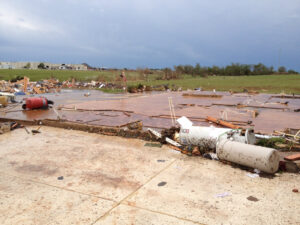
In their study — Real Estate Market Response to Enhanced Building Codes in Moore, Oklahoma — which was published in the International Journal of Disaster Risk Reduction, Simmons and Kovacs compare three years’ worth of data on residential construction costs, sales prices and the number of permits issued in Moore with those of the city of Norman, it’s neighbor to the south, which had not similarly strengthened its residential building code.
“The takeaway from our study was that while the code amendments did increase the cost of construction, there was no adverse effect on the real estate market,” Simmons said. “We had an opportunity to examine the argument that, ‘If you do this, you’re going to kill the real estate market.’ Come to find out, it didn’t.”
“What this study suggests, and what many other similar studies I have been involved with over the past ten years also suggest, is that, first of all, a stricter code is good policy, and secondly, it pays for itself,” Simmons said.
Simmons’ and Kovacs’ findings also track with research conducted by other organizations showing that modern model building codes that include resiliency provisions for protection against earthquakes, flooding, wildfires and other natural disasters have no appreciable implications for housing affordability.
“Even if you look at individual code changes and price out their impacts, in reality, these new requirements eventually become baked into the cost of doing business and have not been shown to have material impacts on affordability,” said Gabe Maser, the senior vice president of government relations at the International Code Council. “It’s not an obvious conclusion, but it’s what the Simmons and Kovacs study found, and other studies also buttress that conclusion.”
Local jurisdictions pass on amending building codes for resiliency
However, other communities in Oklahoma — which does not have a mandatory statewide building code — have not followed Moore’s lead. The Oklahoma Uniform Building Code Commission said that it is unaware of any other local jurisdictions in the state that are considering amending their building codes to address high wind conditions or resiliency. The same goes for Mississippi, which along with Oklahoma stands to benefit the most from wind resiliency provisions, according to the findings of another recent study that Simmons co-authored.
This seeming contradiction has experts scratching their heads.
“There’s a lot of avoidable damage that can be reduced,” said Jeff Czajkowski, the director of the Center for Insurance Policy and Research at the National Association of Insurance Commissioners. “The evidence exists, the science exists, but it’s perplexing why more isn’t being done.”
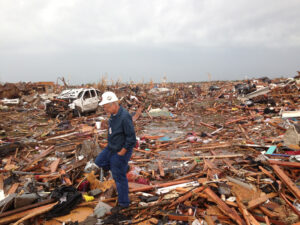
Czajkowski, along with Simmons and four other authors, published a groundbreaking 2018 study in the journal Risk Management that explored the personal, cultural, and institutional dynamics at play in such decisions. The study suggested that people’s opposition to what they perceive as over-regulation is a big driver of opposition to stricter building codes, as is resistance from members of the construction industry who are convinced they’ll have to absorb the cost increases that such codes require. Czajkowski and Simmons both believe that more and better information will help overcome that resistance.
Czajkowski pointed out that much of that information is already publicly available. The Federal Alliance for Safe Homes maintains a website, InspectToProtect.org, that enables homeowners to type in their address and identify whether their building codes are up-to-date. The International Code Council maintains an interactive map of code adoptions by state, model code and country on its website.
Insurers and regulators are also increasingly focused on resiliency, Czajkowski noted, and building codes play an increasingly important role in those considerations. Indeed, anecdotal evidence suggests that codes are gradually becoming more uniform and less of a patchwork of recent and outdated codes, he said.
“I would say that there’s more support for code enhancements and improvements, but there’s still a lot of work to do in the adoption and enforcement space,” Czajkowski said.
Even as insurers, regulators, home builders and legislators increasingly recognize the value of building more resiliency into residential building codes, one of the big unknowns is how homebuyers will respond to that. “Are people more concerned with long-term safety, like the probability that their house will get hit by an EF-5 tornado, or would they rather spend that extra money on granite countertops?” Simmons asks. “I don’t think there’s a really good answer to that yet.”



